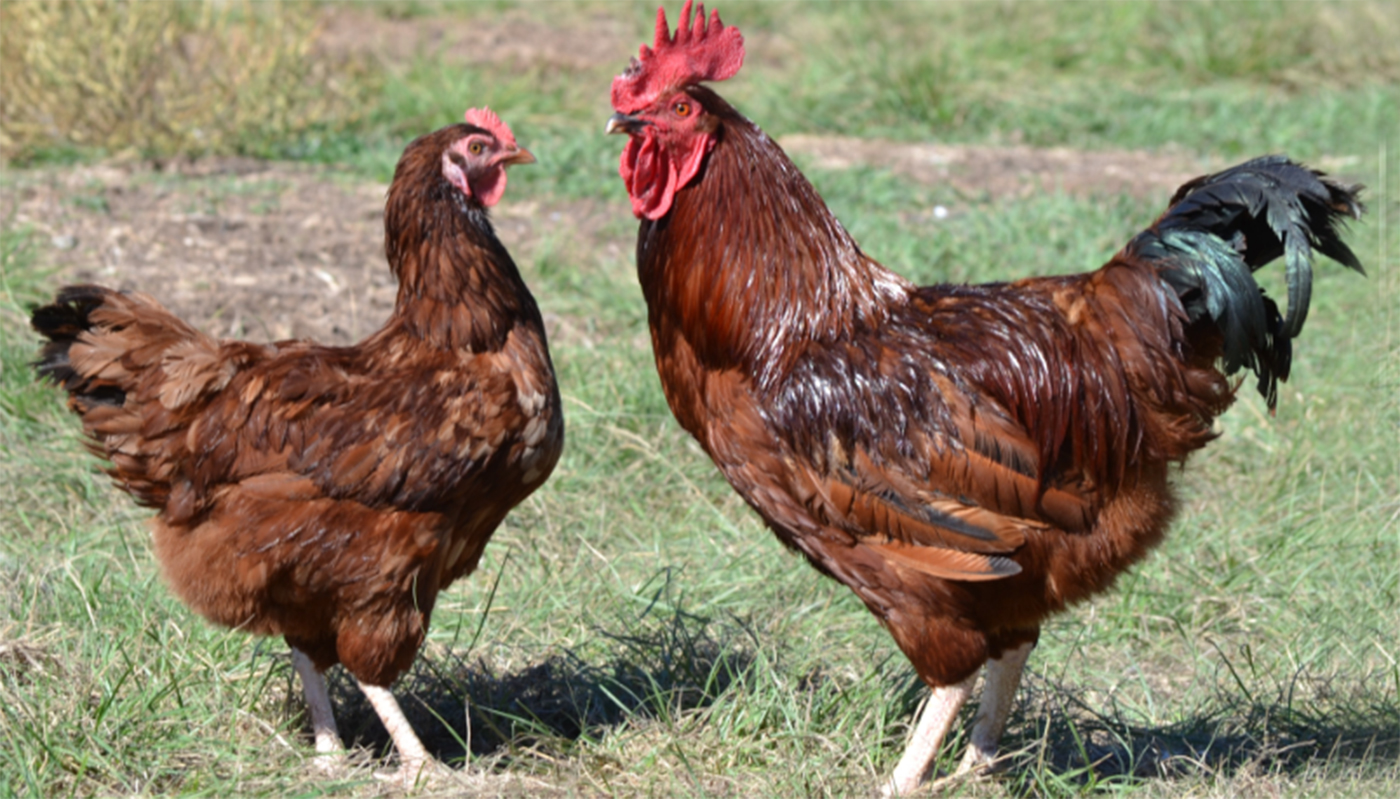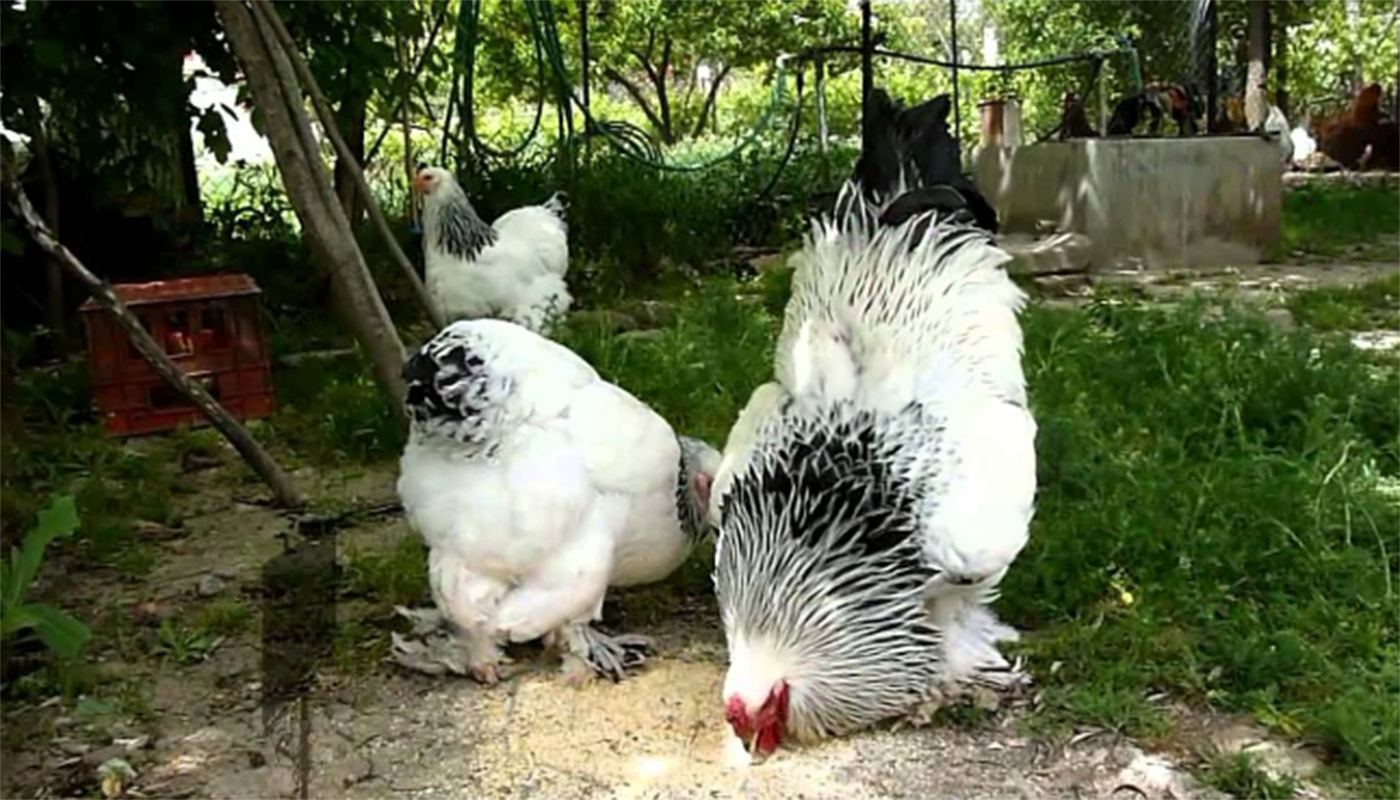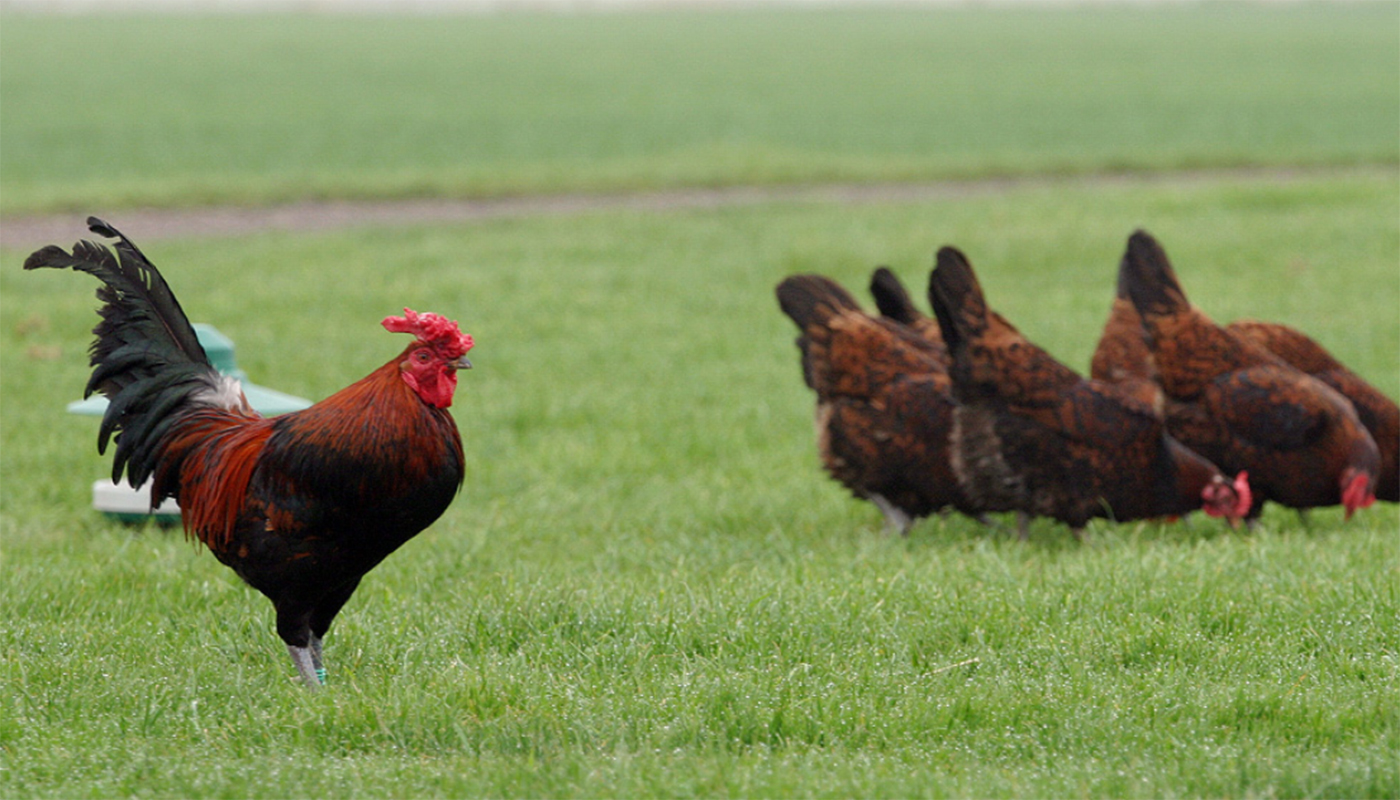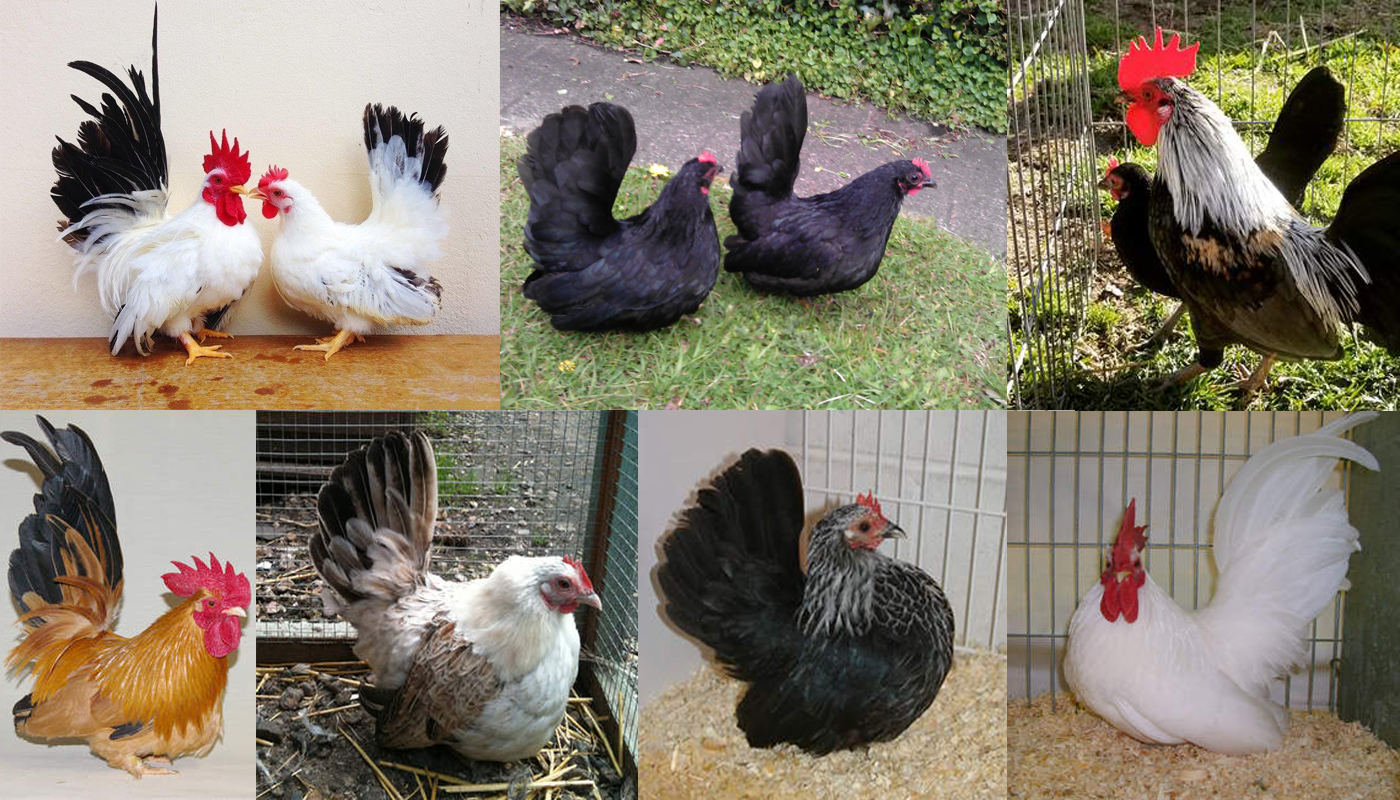
Your chickens will need a place to stay and a nice safe run to be able to browse around in when or if they are not wandering the garden.
In this Series of Housing Your Chickens series we will looks at :
- Part 1 – THE INS AND OUT OF THE CHICKEN COOP (you are already on this page)
- Part 2 – 10 BEST TRACTOR COOP AND RUNS TO BUY
- Part 3 – 45 FREE DIY CHICKEN COOP PLANS, TUTORIALS AND DESIGNS
- Part 4 – 80+ BEST CHICKEN COOPS AND OR RUNS TO BUY
- Part 5 – BEST TEMPORARY/PORTABLE CHICKEN RUNS FOR THE BACK GARDEN TO BUY
CHICKEN COOP BASICS
The breed, size, number of birds and their purpose will determine the size, structure, materials and accessories needed for them.
RULES OF THUMB FOR THE CHICKEN COOP
There are a few rules of thumb to take into account before a person begins to think which chicken coop best suits your needs/garden.
Rules of Thumb:
Coop must be built to any ordinance or regulatory requirement governing your area.
Before building the coop or deciding upon materials and the design check with your local municipality for any ordinances governing keeping backyard poultry in your area.
There may be rules as to how far from the wall you can position the coop.
You may not be able to keep roosters and there may be a limit to the number of chickens you can keep no matter the size of your garden.
The coop may have to be lifted a certain number of feet above the ground.
In some places, you may even need a permit to build various structures in the back garden.
It must have at least 4-square foot per chicken in the coop.
It is really important not to overcrowd the chicken coop.
Chickens get stressed out really easily and overcrowding is a big stress factor for them.
Stressed chickens can lead to all sorts of health issues and unrest in the flock.
Chickens have even been known to turn on each other and will peck, fight and cause damage to each other. Or to one particular chicken that they will bully. Hens can get quite vicious with each other.
Overcrowding is also a huge factor in pest outbreaks such as vermin, parasites such as worm, mites, lice, fleas and ticks.
If you are keeping chickens for some nice eggs an overcrowded coop can lead to low egg production.
It can also lead to hens eating the eggs usually when hens have tasted eggs it is hard to stop them from doing it.
The coop should be lifted at least 2 – 3 feet off the ground.
To keep the coop and the accessories dry it is best to have the coop lifted off the ground.
This also keeps the chickens dry in the rainy season as the base of the chicken coop will not be set upon the ground where water runoff has a chance to seep in.
Wet chickens can lead to all sorts of chicken diseases that can cause various critter outbreaks and even result in dire consequences for your flock.
A lifted coop also provides better protection from vermin and snakes getting into the coop to eat the eggs and or bite the birds.
Helps keep them a bit safer from known predators in the area.
It is also easier to clean when it is at a height that a person can easily access.
Make collecting the eggs a lot easier as well.
Another bonus of a raised coop is that gives the chickens more chicken run space as you can utilize the space beneath the coop as part of the run.
Make sure you use a good material for the run and coop.
You do want the coop to last and be able to withstand various weather conditions.
Cheap sub-standard materials may look like a good option but could cost in the long run.
There are a few options these days as the traditional wood options for the coop and wire chicken mesh for the run.
A person even has the option of plastic coops and plastic chicken mesh. These coops are easier to clean as most of them snap off, they have parts that can be unsnapped and easily snapped back. They also tend to dry a lot quicker than a wooden coop.
Whichever option you choose it is best to ensure that the materials are of a good quality and read up what others have said about them.
You can buy already assembled coops that are delivered/collected all ready to go. You may just need to set up the run or screw in a few screws.
Then there are the Semi-DIY coop and runs that come in a box for you to take home and assemble.
Or you can build the coop from scratch, with a plan, materials, hammer and nails, etc.
It depends on how handy you are or how adventurous you are if you like to try out new things like building your own chicken coop and run.
Ensure roosting/laying boxes are at least 3 – 4 inches deep.
If you are not building the coop and buying one that is already assembled check to see if it has built-in nesting sections.
Some of these may not be deep enough and it is quite important to have the nesting boxes at least about 3 inches deep. Any shallower and you may have a problem with the eggs rolling out or the hens accidentally knocking them out of the nest. Keep in mind that chickens will eat just about anything with eggs being no exception.
The hens also need a place where they feel comfortable when they nest down to lay their eggs.
They need ample room as the box will also have some bedding material to keep them cozy in too.
Make sure roosting polls are thick and sturdy enough for the birds.
Some of the chickens and or a rooster will prefer roosting polls in the coop.
As they like to huddle because it is warmer and makes them feel safer make sure the roosting poles are sturdy. They must also be just wide enough for their feet not to thin or too thick.
Make sure there is enough space to hold a few of them at a time.
Completely enclosed runs are safer for the chickens.
Some chickens cannot fly very high, some cannot fly or just do not like to so people tend to only build their runs to a certain Hight where they know the chickens cannot get out of.
The thing with runs though is, even if you do not have flighty chickens being in an open run also makes the chickens easy prey for chickens. Kind of like shooting fish in a barrel!
I prefer my chicken run to be covered for my own peace of mind and the safety of my chickens.
Both the run and coop should be properly ventilated and insulated.
The coop should have good ventilation but at the same time not too drafty. It should have enough airflow through the coop to keep the air fresh and ensure a good flow through.
Then hens need to be cool in the summer and warm in the winter, so it will need to have some insulations as well.
The run should have some shady spots and a nice section of loose dust for their dust bath.
Another advantage of a raised coop is it provides shade from the sun and shelter from the rain.
If done right there are ways to ensure that water runoff does not affect the run too much as you do not want your chickens sloshing around in the mud this can lead to feet problems. Especially for feathered footed chicken breeds.
There must always be a good patch of loose dirt or sand for a dust bath.
Chickens that do not show birds do not need much grooming other than the regular weekly health and critter checks.
But that is not to say that they do not need a good bath! Only chickens like to take dust baths. This may sound bizarre to us humans as dust is… well… dirty! But not to chickens as they use the dirt to groom themselves. It is quite a sight to behold and when you see it for the first time and you do not know what they are doing it is quite nerve-racking. They way they take their baths makes them look like they are in distress. They flappy out their wings and whoosh around in the dirt. I use the word whoosh as I am not sure how else to describe it. It has to be seen!
They usually dig it out themselves and if they are allowed to wander free in the garden during the day you may notice chicken body shaped type patches around. This is where they have found some dirt and made themselves a nice bathing area.
When a chicken has had their dust bath they are actually cleaner as the dirt removes excess oils from their feathers, any pieces of foliage stuck to their feathers and critters.
Use lining for the coop and run such as wood chips, shredded paper and loose straw.
Some sawdust, straw or various corn shavings on the floor of the coop helps with controlling droppings build up and makes keeping the coop clean a little easier. It also tends to absorb moisture.
But it has to be cleaned regularly too in order to prevent critters, flies and other non-savory pests from infiltrating the coop.
You can use the same material for the nesting boxes to make the hens comfy and cozy to nestle down in to roost and lay their eggs for you.
Kit the coop out with the correct drinking, feeding and perching equipment.
It may seem easier just give the chickens some bowl-type feeders and waterers, but the wrong feed and water bowl can cause a whole host of problems for the chickens.
Chickens poop everywhere, their water bowls and feeders are no exception if it is in the way they will poop in it.
Incorrect feeders and water bowls can get contaminated very quickly causing various diseases and parasites.
Whereas the correct ones will stay cleaners longer and ensure that the chickens have access to fresh water and feed the entire day.
So, it is best to weigh up the cost of the proper equipment against what a sick chicken or whole flock is going to cost in the long run. Some cheaper options will usually not last that long either, so you will have to be replacing them before long too.
Choose the correct spot in the garden that will ensure good living conditions for the birds.
In order to give the chickens good living conditions picking the perfect spot in the garden for their coop is very important.
You do not want to position it where there is too much wind, to much water or too much sun.
You also have to take into account where you can position the coop according to any ordinances or permits may allow you to position it.
When choosing the place remember to look for the water runoff as you do not want the coop slap in a spot where the water runs off in the garden. As your chickens will be constantly walking around in wet and mud which can lead to problems such as Bumblefoot.
You are going to want them to have sun, shade and shelter for not only the coop but the run too. As they can go back in the coop but during the day they tend to like to be out in the fresh air.
THE CHICKEN COOP DESIGN
When thinking of your chicken coop design there are a few things one should take into account:
The size of your garden
If you do not have the already you will need to know the square footage of your garden.
Then take into account any garden space you have, like the flower beds, various trees, vegetable spots, etc.
Minus off any space that you may have to have between a wall and the coop.
Once you have the space remaining you can best decide on the type, style and materials for the chicken coop and run.
The position of the coop
Once you have decided on the design and or type of coop you want it is time to find the best position in the garden for it.
The best thing to do is watch how the sun moves around your garden during the day.
Where the shady spots are, the more sheltered spots are and mostly watch what happens to the various spots on the ground during rain and or snow.
It may seem like a big thing to do but trust me you do not want to have to build your coop and then find it has to be moved, especially if you do not have a tractor coop.
The style of the coop
There are two basic types of coops and they are:
Chicken Tractors Coops/Portable coops
These are portable coop’s they have wheels on them which allow you to move them around your garden. Having the ability to move it from place to place give your chickens fresh ground to get rid of insects on and fertilize.
It also ensures that they do not damage the ground the run is on with too much digging and scratching in one place.
The Pros of Portable/Tractor Coops:
They can be moved around the garden as and when needed
As they are not stationed in one spot the chickens get fresh grass to scratch around in every/every other day.
Less damage to the lawn
Fewer chances or coccidiosis as they are not in the same spot for too long
Less bad odors coming from the hen house
Usually easier to maintain, they are usually lightweight
The coop and run are usually made out of a metal frame, PVC pipe and wood. They have an enclosed run at the front and a closed in coop area at the back that has the roosting pols and nesting boxes in.
Some tractor coops are made out of plastic these days that can pretty much be unclicked, and all the bits cleaned easily.
They are really good for backyards that are small.
They are also really good if your flock is a free-range flock that do not spend that much time in the coop and run.
The Cons of Portable/Tractor Coops:
Mobile coops are generally small
They can only take a few chickens at a time
They are usually only good for breeds that can tolerate confinement
Even then they should only be used to house birds on a temporary basis. For instance, could be used as an isolation coop for new birds or even a medical coop for sick birds.
As they have moved around a lot the frames do tend to get damaged, so they will need a lot of maintenance
They are not as secure as permanent coops and therefore not completely predator and or vermin proof.
Permanent Coops
There are two types of permanent coops and they are:
Fresh-air Coops/Open Front coops
A fresh-air coop has wired mesh barriers that enclose a large usually south-facing window of the coop.
This coop design was very popular in the early 1920’s with chicken owners who owned backyard chickens and homesteaders.
The design was advocated by a Dr Prince T. Woods who in his time was a noted poultry expert and author of “The Classic Guide to Open-Front Chicken Coops for Healthier Poultry”
This style of chicken is fast coming back into popularity as more and more chicken owners are opting for it.
It has been said that the key to keeping healthier chickens is to ensure the coop have proper ventilation but even those closed coops that have windows, vents, etc. are still not allowing enough air in.
Chicken houses tend to be smelly, somewhat dank and usually quite dark. None of these things is produced in healthy chickens or egg laying.
Excellent ventilation is the best way to rid the chicken coop of the excess moisture that chickens tend to give off through both their excretion and breathing.
This style of coop not only looks really good but provides a lot of good light and ventilation for the chickens.
They improve the overall air quality inside of the coop, increase the light and as it is not so close up the coop does not smell as badly.
They can be made quite solid and predator safe.
Enclosed-Coops
These coops have hatches, windows, doors and are made out strong wood with chicken wire mesh.
They have long since been a favorite of any chicken owner whether they are backyard chicken owners, homesteaders or farmers.
These coops generally have a run attached to the chicken house that is either on the ground or raised above the ground for easy run access below (it should be noted that the fresh air coops are designed in much the same way as enclosed coops in that they too are either on the ground or lifted above it with a run attached).
The difference with this coop and the open-air coop is that the enclosed coop has window and doors that can be opened and closed to let in air.
A lot of chicken flock farmers, especially those in the harsh winter climates, prefer the closed coop to keep the chickens cozy.
Pros of the Permanent Chicken Coop:
These are more of a permanent structure in the garden
They do not have to take up too much space as there are some really good designs for all sized gardens
They are sturdier and as they tend to be locked up and solid provide the chicken with more protection from predators
A hardware type cloth is usually set around the perimeter of the permanent coop to stop digging critters, vermin and predators from getting into the coop/run
The coop can have a large enough run attached to it to allow for chickens that are permanently confined to have more room to range around safely confined in the run. A lot of ordinances in urban areas demand that chickens are not left to wander the garden and must have a free-range type pen instead. The permanent coop allows for this type of run.
Cons of the Permanent Chicken Coop:
A permanent coop cannot be moved so the chickens are confined to one spot
There will ultimately be damage to the grass and or foliage in the run. It will inevitably become a dust patch.
The coop run will need a lot of maintenance if you are to try and keep it fresh.
The build-up of excrement can become a big problem if the coop run is not maintained
Confining a run to one place means that chickens will not get the nourishment from the various bugs, plants, etc. that a free-range chicken will. For maximum egg nutrition chickens really need the freedom to free-range.
It is a lot more high maintenance in cleaning and keeping sanitized than the tractor coop does
A lot of planning has to go into where the coop will go in the garden.
Regardless of the size of your garden as long as you are allowed to keep chickens in your area.
You have a bit of space to enable the chicken’s room to move and you are sure keeping chickens is right for you! There are many chicken coop designs and ideas out there that will suit your garden.
END OF PART 1
This is the end of Part 1 of our Housing chickens’ series.
In Part 2 of our Housing Chickens series, we look at some top designs for the tractor coop.
If you are really serious about keeping chickens, you have started on an incredible venture that is really rewarding!
 BEST TEMPORARY/PORTABLE CHICKEN RUNS FOR THE BACK GARDEN TO BUY
BEST TEMPORARY/PORTABLE CHICKEN RUNS FOR THE BACK GARDEN TO BUY 45 FREE DIY CHICKEN COOP PLANS, TUTORIALS AND DESIGNS
45 FREE DIY CHICKEN COOP PLANS, TUTORIALS AND DESIGNS 80+ Best Chicken Coops and Runs to Buy
80+ Best Chicken Coops and Runs to Buy 10 Best Tractor Coop and Runs to Buy
10 Best Tractor Coop and Runs to Buy Rhode Island White Chicken Breed – Everything You Need to Know
Rhode Island White Chicken Breed – Everything You Need to Know CONDITIONS THAT AFFECT THE A CHICKENS FEATHERS
CONDITIONS THAT AFFECT THE A CHICKENS FEATHERS Brahma Chicken Breed – Everything You Need to Know
Brahma Chicken Breed – Everything You Need to Know Redcap Chicken Breed – Everything You Need to Know
Redcap Chicken Breed – Everything You Need to Know The Zodiac of Chickens: Matching Chicken Breeds to Astrological Signs
The Zodiac of Chickens: Matching Chicken Breeds to Astrological Signs Japanese Bantam Chicken Breed – Everything You Need to Know
Japanese Bantam Chicken Breed – Everything You Need to Know Onagadori Chicken Breed – Everything You Need to Know
Onagadori Chicken Breed – Everything You Need to Know Common Digestive Disorders in Chickens: Symptoms, Treatment, and Prevention
Common Digestive Disorders in Chickens: Symptoms, Treatment, and Prevention